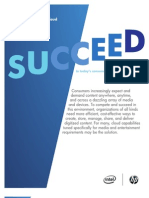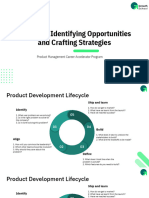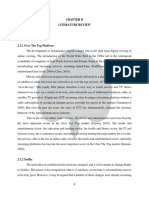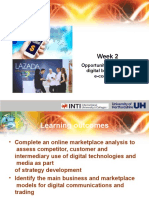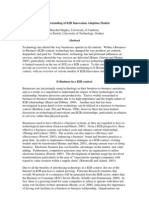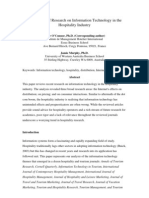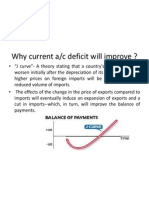DIGITAL TRANSFORMATION IN THE VIDEO GAME INDUSTRY: EXPLORING
INDIE DEVELOPERS’ PERSPECTIVE
INTRODUCTION
The video games industry appears to have performed well in the COVID pandemic, with
expected average annual growth of 8.7 % from 2019 to 2024, and annual worldwide player
base growth of 5.4 % (Newzoo, 2021). However, increasing game development costs (Koster,
2018) mainly due to technological advancements and customer expectations, has led to
difficulties for actors within the industry, and a line of mergers where major actors acquire
mid-tier actors. In January 2022 three such acquisitions happened: Take Two Interactive
acquiring mobile games developer Zynga for $12.7B, Microsoft buying publisher Activision
Blizzard for $68.7B, and finally Sony acquiring developer Bungie for $3.6B. Similar deals,
leading to further consolidation of the market, are now expected to take place in the future
according to industry experts (Carpenter, 2022).
In this paper, we explore the perspective of the independent developers (often labelled as “indie
developers” within the industry and this term is used in the remainder of the paper) using the
IMP theoretical lenses. Indie developers, who are not owned by a publisher, tend to be smaller
in terms of team size and revenue, and usually self-publish their games or find a publisher in
later stages of game development (Dutton, 2012; also see Klézl, Kask, & Kelly (2021) for more
in-depth definitions of actors). This paper reviews the extant indie developer literature to
develop a reliable and robust research instrument (a semi-structured interview guide) using the
IMP’s ARA model to interview indie developers in the next stage of this research and inform
the development of a focused research plan. This will then be used to further the overall
research aims in further exploring their perspectives and finalize the paper by employing IMP’s
ARA model to identify the resources and activities that indie developers utilize. Our
contribution is to examine an industry that is already in the post-digital transformation phase
and could be on a trajectory that other entertainment industries could follow in the near future.
THEORETICAL BACKGROUND
THE ACTIVITY-RESOURCE-ACTOR MODEL
The Industrial Marketing and Purchasing (IMP) group has a long tradition in using a network
approach towards the business activities, interactions, relationships and commitments between
different organizations (e.g. Håkansson & Shenota, 1995; Håkansson & Waluszewski, 2002).
Influenced by inter-organizational and micro–economic theory, versions of the IMP theoretical
framework (Håkansson, 1982; Håkansson & Snehota, 2006; Håkansson et al., 2009) have been
extensively used to explain a broad spectrum of phenomena (e.g. Crespin-Mazet & Dontenwill,
2012; Insanic & Gadde, 2014), by considering the process of interaction between actors within
a relationship context.
The IMP network approach, in models such as the now well-established Activity-Resource-
Actor (ARA) model (Håkansson & Johanson, 1992), is particularly well suited to the field of
SCM, as the systematic interaction between external actors (e.g., suppliers to suppliers,
customers to suppliers) can increase the efficiency of performed activities across the whole
business network. Across many fields, in studying various forms of business-to-business
interactions, the ARA model has been central to the understanding of the substances and
functions of relationships between business actors. The model itself implies that the nature of
business-to-business interactions in a network environment can be depicted as three connected and
equally important layers (Håkansson & Snehota, 1995; Håkansson et al, 2009). These are:
1
� - activities links, which are the technical, administrative, commercial and other activities
of a company that can be connected in different ways to those of another;
- resource ties that connect the various resource elements (technological, material,
knowledge resources and other intangibles) of two actors and in itself represents a
potential resource;
- actor bonds that connect actors and influence how the two actors perceive each other
and form their identities in relation to each other (Håkansson & Snehota 1995).
These add up to a business relationship and can be used to assess, predict or explain the
importance of the relationship.
DIGITAL TRANSFORMATION AND VIDEO GAME INDUSTRY
Hoberg et al. (2015) position their definition of a Digital Supply Chain (DSC) within the wider
area of digital transformation, which is: “…an organizational change process where digital
technologies are used to radically change how a company creates value, how it interacts with
its customers and business partners, and how it competes in established and emerging markets.”
(2015: 6). The fast-moving nature of technological development and its effect on the re-shaping
of consumer preferences and consumption (Vendrell-Herrero et al., 2017) have created, and
will continue to create, significant disruptions in DSCs and therefore their management
involves: “…leveraging innovative digital technologies to change the traditional way of (1)
performing supply chain planning and execution tasks, (2) interacting with all kinds of supply
chain participants, and (3) enabling new corporate business models”. (Farahani et al., 2016:
159). Digital technology disrupts the way product firms compete and offer services (Vendrell-
Herrero, 2017) and such digitalization has many dimensions of potential disruption from
automation in supply chains, servitization of products (Bughin & Van Zeebroeck, 2017) and a
shift in channel management from conventional, physical distribution to the online
(Büyüközkan & Göçer, 2018). Many of these dimensions appear simultaneously within one
field, therefore increasing the effect of any disruptions. Due to the amount of turmoil digital
disruption is causing, companies are under increasing pressure to react and create new
strategies for the future (Weill & Woerner, 2015).
The VGI can be seen as a pioneer in digitalization efforts, demonstrating a number of relevant
DSC characteristics, including enhanced and accelerated innovation, personalized experiences,
rapid responsiveness and greater flexibility (De Prato et al., 2010). Hence, a contextual study
on the VGI network not only provides specific insights for the network/industry itself but also
for other emerging and disrupted DSCs. Increasing home Internet availability and the continued
iteration of Microsoft, Sony and Nintendo products (alongside the PC) meant consumers gained
greater access to videogame content online (Gretz, 2010). For example, platforms that
distribute products digitally, without the need for a physical boxed product and reducing the
reliance on physical distribution and retail, bringing with it significant changes in the inter-
organizational flows of materials, information and money. In addition, there has also been a
significant increase in self-publishing via platforms such as Steam, without the need for a
traditional publishing house and offers developers different distribution options with the
process of disintermediation taking place throughout the VGI network. At the same time, the
industry is rather conservative when it comes to pricing and prices of new games have been
largely stagnant in the past decade at around 60 USD, meaning that adjusted for inflation, the
games in the past used to be much more expensive (Orland (2020) claims that games were
priced at around 30 USD in the 80s, which is around 80 USD when adjusted for inflation). The
significance of the VGI and the magnitude and speed of technological, distribution and
consumer buying behavior changes, mean that there is now a pressing need for research focused
on the interrelationships and activities between the actors in the VGI.
2
�Since the VGI has been pioneering the digitization, it has reached the post-digital disruption
era quite early. This is characterized by growth in terms of revenues, but also questions of the
sustainability of current activities and practices. Thus, there are a few likely trajectories
comprising of different activities and developments in future business models within the
industry, which are likely to happen simultaneously (Klézl, Kask & Kelly, 2021). The first such
trajectory is the switch to subscription-based models, both from platform owners (Microsoft,
Sony and Nintendo) and digital marketplaces (e.g., EA Play). However, video games have
several characteristics that make them less fit for subscription-based services than video
streaming or music. Games tend to offer longer engagement periods. While the actual amount
can vary quite a lot, player can potentially spend hundreds of hours in one game alone, thus
having less time to play more than one game at a time (Singer & D’Angelo, 2020). Secondly,
further line of mergers and acquisitions is likely to happen as the top-level publishers,
developers and platform owners are looking to purchasing existing mid- and small-sized
developers. All the acquisitions could be summed as some form of vertical integration, where
either the digital (or even hardware) platform owner buys a developer to be sure that their
games appear on the platform, or larger developer acquiring smaller one to combine their
developing resources, reputation and to achieve better position in dealing with producers.
Finally, some of the existing alternative business models such as microtransactions, and in
particular loot boxes, are likely to face increased regulatory interest (e.g., McAffrey, 2019) on
both national and international (e.g., European Union) levels. This would mean that these
practices, which are usually aimed at increasing and prolonging revenue streams from highly
successful (and expensive) games would be more difficult for the developers to use. Developers
and publishers might try to find another new business models, however once the regulatory
interest is in the field that was previously quite unregulated, the new business models might
come under scrutiny much sooner than the existing ones.
INDIE DEVELOPED GAMES
The context of this research is to look at the overall network of the Videogames Industry (VGI)
from the under researched, yet important perspective of the indie developer. Kerr (2006)
conceptualizes three types of games development companies: first-party developers which are
fully integrated into a publishing company; second-party developers who are contracted to
create games from concepts developed by a publisher; and third-party developers, who develop
their own projects and try to sell them to a publisher (2006: 64). The focus of this research is
on the latter category, in which independent development houses: “…are often typified by their
reliance on alternative production and distribution structures compared to mainstream game
companies” (Lipkin, 2012: 11). However, the term “indie” generally refers to games made by
small to mid-size teams on low budgets, which can be digitally distributed and do not therefore
need the support of traditional publishers (Phillips, 2015).
Although indie games encompass a wide variety of game-making practices, from slick
commercial offerings to more experimental and amateur pursuit, they are becoming an
increasingly visible and central part of the industry and culture of digital games, and the
creative industries more generally (Parker and Jenson, 2017). They account for over 95% of all
games on Steam and 40% of sales (Vginsights, 2022), with an increase in price from $6.3 in
2018 to $7.7 in the second half of 2020 and corresponding increases in average positive ratings,
i.e., 74% in 2019 to 78% in 2020 (Intoindiegames, 2021). In terms of unit numbers, the most
popular indie games, which have entered into the mainstream consumer market are: Minecraft
- 200m, Rocket League – 40m, Terraria – 35m, Human Fall Flat – 30m, Castle Crashers - 20m,
Among Us – 15m (Tuko, 2022). The transition between indie and mainstream is also seen when
Minecraft (Mojang, 2011) was purchased for $2.5 billion dollars by Microsoft in 2014 (Bass,
2014).
3
�The divide between “formal” and “informal economies, organizations, practices and working
behaviors is a complex and fluid one, with the latter broadly referring to: “...a range of activities
and processes occurring outside the official, authorized space of the economy” (Lobato and
Thomas, 2015: 7). With advances in digital technology and distribution, this divide is
increasingly blurred as: ”Individual content creators are increasingly afforded by and rely on
formal corporate platforms to distribute their creative activity to dispersed niche audiences
while, at the same time, these formal platforms are commercially dependent on the content
produced by informal creators” (Keogh, 2019: 17). These challenges show the difficulty in
perceiving the VGI (and other similar creative industries) as stable or market-driven and there
is a need to further explore the foundational actors and practices (Keogh, 2019). As indie game
development is typical of work in contemporary cultural industries: creative, entrepreneurial,
flexible, precarious with a tension between the formal and informal (Lobato and Thomas, 2015;
Ruffino, 2013; Whitson, 2014), we suggest that the ARA model is a useful lens through which
to more fully understand this industrial context.
METHODOLOGY
This paper synthesizes the extant indie game developer literature into a series of interview
questions that will allow for data to be collected and then analyzed to further understand the
different and interrelated components of the ARA model. This protocol (shown below) will
then be used to in a series of semi-structured interviews, with subsequent thematic analysis.
The development of our research instrument was informed by extant IMP ARA empirical
research (specifically Harrison, & Prenkert, 2009; Runfola et al., 2021) to form the underlying
questions and the overall structure to ensure that data can be gathered at the organisational,
dyadic and network level. The relationships between publishers, developers and digital
platforms as key actors will be explored (including the point of ownership, highlighted by the
recent wave of acquisitions), as well as the resources, which include the games themselves as
products, and activities such as business models, and development and publishing processes.
To build the indie developer perspective of the VGI network and provide the necessary
industrial focus and context, we tailored the questions using a variety of specific literature,
which is shown in the individual questions where appropriate.
1. Individual and company demographics:
A. How long have you worked in the VGI?
B. Have you had any different roles in the VGI?
C. How long has your company been going?
D. What type of games have you developed?
E. What games have you developed?
2. Actors:
A. How is your organisation structured?
B. How are the roles of the programmer, the designer and the artist divided up (Tschang,
2005)?
C. Who else do you engage with (i.e. from other companies) (network of actors)? [can be
extended by questions that follow].
3. Activities:
A. How do you interact with other indie developers? (Parker & Jenson, 2017).
B. How do you get your work visible to players? (Leadbeater and Oakley, 1999).
C. How do you get feedback from players? (Tong, 2021).
4
� D. Do you interact with publishers? If so, how? (Hoogendoorn, 2014).
E. Are these joint/shared activities?
F. What type of relationship do you have with others?
G. How are processes such as development handled in your company? Are they
coordinated internally and externally?
H. Which of the activities above are the most important (actor bonds) and how do you
rely on them (resource ties)?
I. What type of challenges do you face when engaging with others (both internally and
externally)?
J. How do you manage your internal costs to make sure you are efficient?
K. What does success look like for you? (Whitson & Parker, 2021).
4. Resources:
A. What do you need to develop a game (skills, technology etc)? (Keogh, 2019).
B. Are any of these externally driven, e.g. funding opportunities, media recognition?
(Parker & Jenson, 2017).
C. Would these be different if you worked for a mainstream developer?
D. How do you decide what games to develop? (Parker & Jenson, 2017).
E. How do you fund your activities? (Styhre & Remneland-Wikhamn, 2019).
F. How do you protect your games from cloning (Phillips, 2015)?
5. Future of the indie developer:
A. What opportunities do you see in the future?
B. What threats are there?
6. Are there any other areas that you feel haven’t been covered?
Clear links between the questions and the ARA elements have been established and these are
shown in Figure 1.
Company Relationship Network
Activity structure Activity links Activity pattern
Activities
Q: 3B; 3J; 3K Q: 3A; 3C; 3D; 3F Q: 3E; 3G
Organizational structure Actor bonds Web of actors
Actors
Q: 2A; 2B Q: 2C; 3H Q: 2C
Resource collection Resource ties Resource network
Resources
Q: 4A; 4C; 4D Q: 3H; 4B; 4E Q: 4F
Figure 1 – interview questions and their relationships to the ARA components
To ensure that a rigorous approach to the data collection and analysis is adopted a number of
specific quality dimensions, taken from the oft-used Lincoln & Guba (1985) evaluative criteria
framework, have been incorporated into the research process. In the preparation phase,
credibility was established by building on existing theory (the ARA model), synthesizing the
relevant VGI literature to distill a specific and understandable focus for the interviewees and
this was reviewed by an expert in the field with specifically indie game development
experience. This resulted in small changes which were incorporated into a revised interview
protocol, mainly in restructuring and clarifying questions in group 3 – Activities (3D, 3G, 3H
and 3I). The expert also pointed out further potential confusion for interviewees in the usage
of the key IMP terms (e.g., activities, resources), so definitions and examples will be provided
5
�to inform the respondent. Credibility will be ensured at a later stage of the research process
through ‘member checking’ when the interview transcripts and a draft version of the findings
will be sent to the participants for review. Transferability will be developed through a ‘thick
description’ approach where in-depth and wide-ranging interviews will be used that will
include the opportunity to participants to contribute additional data through an open question
at the end of the interview, as well as the researcher asking for the option of a follow-up
discussion should the need arise. In addition, this quality criteria will be ensured by the
development of a robust sampling strategy in selecting independent game developers who have
released at least one game in the last 5 years for the research population, and we will utilize
convenience and snowball sampling to form a sample of at least 6 interviews for the final
version of this paper.
These interviews are expected to take place in the summer of 2022, and it is hoped that
preliminary findings can be presented at the conference. Dependability will be demonstrated
through an ‘external audit’, where a researcher not involved in this research evaluates whether
or not the findings, interpretations and conclusions are supported by the data. Finally,
confirmability will be supported by keeping an accurate ‘audit trail’ in the form of a clear
description of the research path that will ensure that: “…the reader needs to know the principles
and choices underlying pattern recognition and category foundation." (Malterud, 2001: 486).
In addition, a transparent coding process, using Nvivo qualitative analysis software, will be
used.
CONCLUSION
In this paper, we continue exploring the video game industry, which is already in the post-
digital transformation phase and could serve as a reference for other industries to what positives
and challenges extensive digitization bring to an industry. In this conference paper, we take the
perspective of the indie game developers, who are significant industry players, but due to their
smaller size, their individual influence on other actors is reduced, and develop a robust research
instrument which will be used in our subsequent research. We align base the instrument on
extant IMP research (e.g., Harrison & Prenkert, 2009) and ARA model, while maintaining the
overall complexity of the instrument on a level where practitioners would be able to relate.
REFERENCES
Bughin, J., & Van Zeebroeck, N. (2017). The Best Response to Digital Disruption: Companies
that adopt bold strategies in the face of industry digitization improve their odds of coming
out winners. MIT Sloan Management Review, 58(4), 80–86.
Büyüközkan, G., & Göçer, F. (2018). Digital Supply Chain: Literature review and a proposed
framework for future research. Computers in Industry, 97, 157–177.
Carpenter, N. (2022, February 2). Microsoft, Sony acquisitions are the start of further
consolidation. In Polygon. https://www.polygon.com/22914859/microsoft-activision-
blizzard-sony-acquisitions-consolidation-2022
De Prato, G., Feijóo, C., Nepelski, D., Bogdanowicz, M., & Simon, J. P. (2010). Born digital /
grown digital: assessing the future competitiveness of the EU video games software
industry. In JRC Scientific and Technical Reports.
Dutton, F. (2012, April 18). What is Indie? In Eurogamer.
https://www.eurogamer.net/articles/2012-04-16-what-is-indie
Farahani, P., Meier, C., & Wilke, J. (2016). Digital supply chain management agenda for the
automotive supplier industry. In Shaping the Digital Enterprise: Trends and Use Cases in
6
� Digital Innovation and Transformation (pp. 157–172). Springer International Publishing.
Gretz, R. T. (2010). Hardware quality vs. network size in the home video game industry.
Journal of Economic Behavior and Organization, 76(2), 168–183.
Håkansson, H., Ford, D., Gadde, L.-E., Snehota, I., & Waluszewski, A. (2009). Business in
networks. John Wiley.
Håkansson, H., & Snehota, I. (Eds.). (1995). Developing Relationships in Business Networks.
Routledge.
Harrison, & Prenkert, F. (2009). Network strategising trajectories within a planned strategy
process. Industrial Marketing Management, 38(6), 662–670.
https://doi.org/10.1016/j.indmarman.2009.05.012
Hoberg, P., Krcmar, H., Oswald, G., & Welz, B. (2015). Skills for Digital Transformation.
Research report, Institute for Digital Transformation, Technical University of Munich.
Hoogendoorn, N. (2014). Who’s Indie Now? Classifying Indie in the Games Industry. Bachelor
Thesis, Utrecht University.
Intoindiegames (2021). Steam game trends in 2020 – COVID and the rise of indie games. In
Into Indie Games. https://www.intoindiegames.com/steam-game-trends-in-2020-covid-
and-the-rise-of-indie-games/
Klézl, V., Kask, J., & Kelly, S. (2021). Power struggles in the age of digital disruption: the case
of video games industry. IMP Forum 2021 Uppsala and Online, May 19-20.
Keogh. (2019). From aggressively formalised to intensely in/formalised: accounting for a
wider range of videogame development practices. Creative Industries Journal, 12(1), 14–
33.
Kerr, A. 2017. Global Games: Production, Circulation and Policy in the Networked Era. New
York: Routledge
Koster, R. (2018). The cost of games. In Raphkoster.com:
https://www.raphkoster.com/2018/01/17/the-cost-of-games/
Leadbeater, C, Oakley, K (1999) The Independents: Britain’s New Cultural Entrepreneurs.
London: Demos.
Lincoln, Y. S., & Guba, E. G. (1985). Naturalistic inquiry (Vol. 75): Sage.
Lipkin, N. (2012). Examining Indie's independence: The meaning of “Indie” games, the
politics of production, and mainstream co-optation. Loading…, 7(11), 8–24.
Lobato, R., and J. Thomas. 2015. The Informal Media Economy. Cambridge: Polity Press.
Malterud, K. (2001). Qualitative research: Standards, challenges and guidelines. The Lancet.
358, 483-488.
McCaffrey, M. (2019). The macro problem of microtransactions: The self-regulatory
challenges of video game loot boxes. Business Horizons. 62, 483-495.
Newzoo. (2021). Newzoo Global Games Market Report 2021. In Newzoo.
https://newzoo.com/insights/trend-reports/newzoo-global-games-market-report-2021-
free-version/
7
�Orland, K. (2020). The return of the $70 video game has been a long time coming. In
Arstechnica. https://arstechnica.com/gaming/2020/07/the-return-of-the-70-video-game-
has-been-a-long-time-coming/
Parker, F. & Jenson, J. (2017). Canadian Indie Games Between the Global and the Local.
Canadian Journal of Communication, 42(5), 867–891.
https://doi.org/10.22230/cjc.2017v42n5a3229
Phillips (2015). Don’t clone my indie game, bro”: Informal cultures of videogame regulation
in the independent sector. Cultural Trends, 24(2), 143–153.
https://doi.org/10.1080/09548963.2015.1031480
Runfola, Guercini, S., & Milanesi, M. (2021). Network interactions for pharmaceutical market
access: findings from an explorative research. The Journal of Business & Industrial
Marketing, 36(13), 174–186.
Singer, D., & D’Angelo, E. (2020). The Netflix of gaming? Why subscription video-game
services face an uphill battle. McKinsey.
https://www.mckinsey.com/industries/technology-media-and-telecommunications/our-
insights/the-netflix-of-gaming-why-subscription-video-game-services-face-an-uphill-
battle
Styhre, A. & Remneland-Wikhamn, B. (2019). The ambiguities of money-making: Indie video
game developers and the norm of creative integrity. Qualitative Research in
Organizations and Management, 15(3), 215–234.
Tschang, FT (2005) Videogames as interactive experiential products and their manner of
development. International Journal of Innovation Management 9(1): 103–131.
Tong. (2021). Positioning game review as a crucial element of game user feedback in the
ongoing development of independent video games. Computers in Human Behavior
Reports, 3, 100077–. https://doi.org/10.1016/j.chbr.2021.100077
Tuko (2022). Top 20 best selling indie games of all time you should try out. In Tuko.
https://www.tuko.co.ke/421556-top-20-selling-indie-games-time-out.html.
Vendrell-Herrero, F., Bustinza, O. F., Parry, G., & Georgantzis, N. (2017). Servitization,
digitization and supply chain interdependency. Industrial Marketing Management, 60,
69–81.
Vginsights (2022). Indie games make up 40% of all units sold on Steam. In VG Insigthts.
https://vginsights.com/insights/article/indie-games-make-up-40-of-all-units-sold-on-
steam
Weill, P., & Woerner, S. L. (2015). Thriving in an Increasingly Digital Ecosystem. MIT Sloan
Management Review, 56(4), 27–34.
Whitson, Simon, B., & Parker, F. (2021). The Missing Producer: Rethinking indie cultural
production in terms of entrepreneurship, relational labour, and sustainability. European
Journal of Cultural Studies, 24(2), 606–627. https://doi.org/10.1177/1367549418810082











